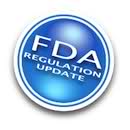FDA Artificial Pancreas Draft Guidance – What JDRF Thinks
 As you know, JDRF conducted an extensive advocacy campaign
As you know, JDRF conducted an extensive advocacy campaign
in 2011 which resulted in FDA
release of draft artificial pancreas guidance
in December. Since then, our team has
completed a thorough analysis of the FDA draft, speaking with many
experts. Overall, we still remain very
encouraged by the guidance – it lays a reasonable pathway for performing AP
research in the U.S. and for getting this critical technology to people with
T1D. However, we have identified several
areas where revisions to the guidance are needed. We plan to submit comments shortly to FDA
using the on-line comment
process.
Based on our recent discussions with FDA
officials, they are eager to receive feedback, and plan to finalize this and
the low glucose suspend (LGS) guidance in the coming months. Below is a summary of our thoughts.
There are seven things that we find positive in the draft
guidance:
- FDA clearly recognizes the
importance of the use of CGM data in the evaluation of AP systems. - FDA has recommended a step-wise
study progression of feasibility, transitional, and pivotal studies that is
generally consistent with the view of experts in the community. - FDA recognizes the need for
flexibility in designing and conducting clinical studies of AP systems. - The draft guidance corrects a
major issue from the draft guidance on LGS systems about what is needed when
equivalent components are substituted into an already approved AP system. - FDA now envisions non-inferiority
studies (studies that show an AP system is not worse than a control therapy) or
superiority studies (studies that show an AP system is better than a control
therapy) to be acceptable for premarket approval. - FDA has included elements that
could decrease the time it takes to get an AP system to people with T1D. - Consistent with the input of
clinical experts, the draft guidance allows for sponsors to propose that in
certain populations, acceptable increases in %HbA1c may be offset by benefit in
another endpoint (such as a reduction in hypoglycemic events).
We have
identified three issues that need to be modified in the final version of the
guidance:
- Time in Range (TIR) is a very important measure for AP
systems and FDA needs to identify how TIR can be used as a primary endpoint. - The guidance should not specify superiority margins
(how much better an AP system has to be than a control therapy), but should
instead allow sponsors to define statistical hypotheses for their studies,
following FDA precedent. - The description of the stages in the clinical study
progression should allow a broader range of studies in each stage and should
take into account the needs for research in addition to commercial activities.
Our comments to FDA will also include other technical suggestions
as well.
Following the comment period, we
will continue to work with FDA as they finalize both this as well at the LGS
guidance. We look forward to providing
more updates in the coming months.
Campbell Hutton
Director, Regulatory Affairs- Devices
JDRF